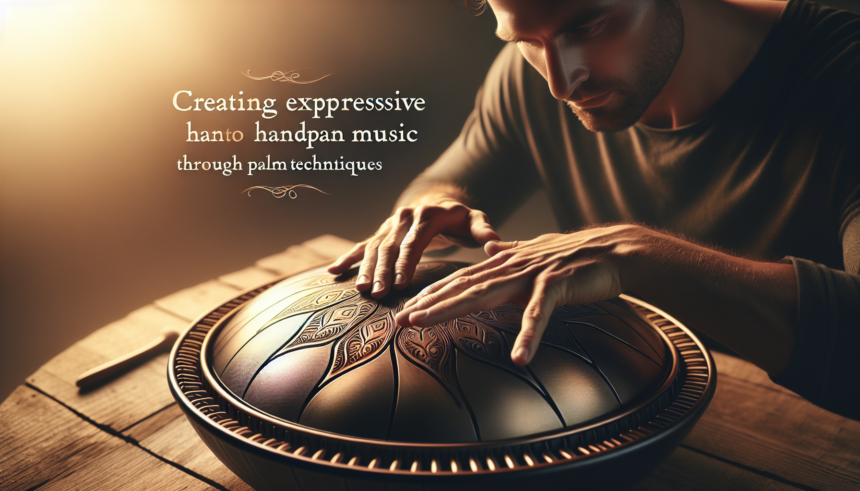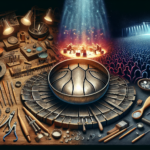<!DOCTYPE html>
<html lang="en">
<head>
<meta charset="UTF-8">
<meta name="viewport" content="width=device-width, initial-scale=1.0">
<title>Expressive Handpan Music</title>
<style>
body {
font-family: Arial, sans-serif;
line-height: 1.6;
margin: 20px;
}
h2 {
color: #007BFF;
}
p {
margin-bottom: 20px;
}
ul {
margin-top: 0;
margin-bottom: 20px;
}
.faq {
margin-top: 40px;
}
.faq p {
font-weight: bold;
}
</style>
</head>
<body>
<h2>Introduction to Handpan Music</h2>
<p>
The handpan is a captivating musical instrument, resembling the look of a UFO with its metal body and tuneful vibration. It produces a sound that is both meditative and evocative, making it a favorite among musicians who cherish expressiveness and emotional depth in music. Originating from a fusion of the steelpan sound with innovative acoustic engineering, the handpan is played with the hands, allowing for a direct and intimate connection between the musician and their creation. Its surface features dimples that are struck to produce different notes, and it is through the art of hand technique that one can master the expressive potential of the instrument.
</p>
<h2>Understanding the Role of Palm Techniques</h2>
<p>
Palm techniques are crucial for creating expressive handpan music. Unlike conventional drumming, where sticks or mallets might be used, playing the handpan relies primarily on the player's hands and palms. This direct contact not only facilitates a rich variety of tones but also allows the player to convey a more personal expression through subtle gestures and intricate dynamics. Mastery of palm techniques enables musicians to explore the depth of the handpan’s sound spectrum, from gentle tinkles to resonant bass tones, thus crafting a more emotive performance.
</p>
<h2>The Anatomy of Handpan Palming</h2>
<p>
Understanding the anatomy of handpan palming is essential for any player looking to delve into the expressive capabilities of the instrument. The palm serves several functions: it can strike, mute, slide, and even tap to create different textures and tones. Players use different parts of the palm, such as the heel, the fleshy center, and the edge, to generate distinct sounds. Each part offers unique contact and pressure dynamics, allowing for various tone qualities. Additionally, the handpan's physical layout enables a player to alternate between fingers and palms seamlessly, adding layers of complexity and color to their music.
</p>
<h2>Exploring Basic Palm Techniques</h2>
<p>
Several basic palm techniques are foundational for any aspiring handpan musician. These techniques include the palm strike, the heel drop, the slide, and the hover mute. Each serves a different musical purpose and provides an avenue for creativity.
</p>
<ul>
<li><strong>Palm Strike:</strong> This technique involves striking the surface of the handpan with a light, controlled force using the palm. It allows for the production of stark, clearly defined notes and can be varied in intensity to moderate the volume of sound produced.</li>
<li><strong>Heel Drop:</strong> The heel of the hand strikes the handpan, producing lower pitches and bass tones. It’s an effective way to add depth and resonance.</li>
<li><strong>Slide:</strong> By dragging the palm softly across the texture of the handpan, listeners can delight in a soft glissando effect, reminiscent of gentle water ripples.</li>
<li><strong>Hover Mute:</strong> This technique involves hovering the palm close to the surface of the note after it has been struck, dampening the sound for a more staccato effect.</li>
</ul>
<h2>Advanced Palm Techniques for Expressive Depth</h2>
<p>
Once basic techniques are mastered, musicians can venture into advanced palm techniques to further enrich their music. Such techniques blend subtler hand movements with creative experimentation to unlock new sound possibilities.
</p>
<ul>
<li><strong>The Roll:</strong> This involves a continuous rolling motion of the palm across multiple notes, creating an expressive wave of melody.</li>
<li><strong>Finger Flick:</strong> Often combined with a palm strike, finger flicks offer quick, high-pitched accents that enhance melodic detail and rhythm.</li>
<li><strong>Quartz Crystal Effect:</strong> Mimicking the sound of quartz crumbling or a gentle rain, the effect is produced by very light, minute rolls of the palm combined with tapping fingers.</li>
<li><strong>Ghost Notes:</strong> Achieved by striking notes with a very gentle force, they add a layer of soft background harmony without overshadowing primary melodies.</li>
</ul>
<h2>Crafting Personal Style with Palm Techniques</h2>
<p>
Note-to-note interactions on the handpan can vary dramatically from one musician to another, and palm techniques serve as an integral part of crafting a unique musical style. By establishing one's own language of palming, players harvest their individuality through personal expression. They draw influences from diverse musical genres and reverse-engineer the mechanics into their handpan performance, creating a unique tapestry of sound. This personal signature becomes apparent when players stylize based on their musical tastes, personality, and the handpan itself. A handpan's tuning, material, and sensitivity all play roles in a musician's stylistic journey.
</p>
<h2>The Role of Improvisation and Creativity</h2>
<p>
The handpan, with its intuitive design, encourages improvisation. Musicians often start with simple palm techniques and gradually build layers of complexity as confidence grows. The exploration phase allows for breaking conventional rule sets and the integration of spontaneous rhythms, leading to creativity-led innovation. This improvisational approach means each performance can become a deeply personal interaction, unique and ephemeral. The palm is both a tool and an instrument of expression, guiding musicians through wordless storytelling enriched with emotion and vibe. Through experimentation and play, musicians create pathways for personal discoveries and artistic breakthroughs.
</p>
<h2>Emotional Expression through Palm-Focused Performance</h2>
<p>
At its core, handpan music is deeply tied to emotional expression. The ability to convey emotions through music is what makes the handpan so transformative and healing. Palm techniques, with their varied dynamics and tactile interaction, empower musicians to express a broad array of emotions—ranging from serene peace to fiery passion. The nuanced control provided by palm techniques allows performers to translate their internal emotions into external soundscapes, communicating with audiences without words. Through quiet reflections or robust, energetic expressions, the handpan becomes an emotional canvas painted with the colors of palm-fueled tonality.
</p>
<h2>Integrating Technology for Enhanced Palm Techniques</h2>
<p>
Modern handpan players often incorporate technology, such as loop stations and reverb pedals, to broaden the expressive range of palm techniques. Technology allows players to record and layer handpan sounds, supporting them to create intricate soundscapes that are otherwise impossible with bare technique alone. Loops enable complex compositions through layering, while reverb pedals can enrich the texture of palm strikes, slides, and rolls for more atmospheric performances. As musical innovation progresses, these technological aids integrate with traditional palming skills to amplify and transform live performances, evolving the traditional art of handpan playing.
</p>
<h2>Conclusion</h2>
<p>
Creating expressive handpan music through palm techniques is both an art and a journey of personal expression. From learning basic strikes to mastering advanced rolls, palm-focused techniques open vast realms of musical exploration. Each palm movement infuses the music with subtle emotional textures, crafting soundscapes that resonate with both performers and their audiences. Mastery lies not in mimicry but in personal style, creativity, and improvisation that allow the musician to voice their unique story. Embracing technological advances provides new potentials, but the essence remains in the handpan's inherent ability to connect soul through the intimate language of palms.
</p>
<div class="faq">
<h2>FAQs</h2>
<p>Q: How do I start learning handpan with palm techniques?</p>
<p>A: Begin with understanding the basic palm strikes and movements. Practice regularly and listen to handpan music to internalize rhythm and tone. Consider attending workshops or seeking guidance from experienced players to accelerate your learning process.</p>
<p>Q: What is the importance of palm technique in handpan music?</p>
<p>A: Palm techniques are integral to creating expressive, rich sound textures on the handpan. They allow musicians to manipulate dynamics, evoke emotions, and personalize their musical style.</p>
<p>Q: Can I incorporate other instruments with the handpan?</p>
<p>A: Absolutely, the handpan harmonizes beautifully with other instruments. Experimenting with different instrumental pairings can create unique soundscapes and enhance performances.</p>
<p>Q: Are palm techniques suitable for beginners?</p>
<p>A: Yes, beginners can start with basic palm techniques. As they build confidence and skill, they can explore more advanced techniques. The journey is progressive, allowing one to grow with continual practice.</p>
<p>Q: How can technology enhance handpan performances?</p>
<p>A: Technology, such as loop stations and effects pedals, can expand the possibilities of handpan music by enabling complex layering and enriched textures, ultimately enhancing live performances.</p>
</div>
</body>
</html>Creating Expressive Handpan Music Through Palm Techniques

Leave a comment




